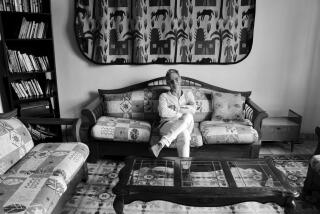NONFICTION - Jan. 19, 1992
- Share via
AMERICA IN 1492, edited by Alvin M. Josephy Jr. (Alfred A. Knopf: $35; 368 pp.). It is shocking, as Alvin Josephy Jr. notes in the introduction to this volume, that a respected history textbook could state as recently as 1987 that while civilizations evolved around the globe, “the Americas stood empty of mankind and his works.” In fact, by the time Columbus arrived in 1492 the two continents were settled by perhaps 2,000 different cultures, ranging from Inuit hunting peoples in the Arctic to the shell-fishing Yahgan in the southernmost reaches of Tierra del Fuego, from the bean-growing Hidatsas of the upper Missouri to the Southwest’s stable Navajo, from the Warrau “boat people” of the Orinoco delta to the ritually head-hunting Mundurucu near the Amazon basin. These are just a handful of the native cultures encountered in this book, which is so packed with information that the head spins, reaching critical overload a hundred pages in. Nearly a score of academics have contributed essays, and although they pass on a vast number of interesting facts--every water-dependent tribe, it seems, had a different way of making its canoes--reading “America in 1492” too often becomes a grueling, monotonous task. Forced to cover a lot of ground in just a few pages, many of the contributors only skim surfaces, leaving the reader wanting more--a sense only accentuated by the book’s most engrossing chapter, in which anthropologist Alan Kolata provides a detailed discussion of the Incas. America in 1492 would be more effective in five volumes, but the fact that it exists in only one demonstrates that those who write about the original Americans must settle for what they can get, and, not coincidentally, that their frequent complaints about “Eurocentrism” are on the mark.
More to Read
Sign up for our Book Club newsletter
Get the latest news, events and more from the Los Angeles Times Book Club, and help us get L.A. reading and talking.
You may occasionally receive promotional content from the Los Angeles Times.








